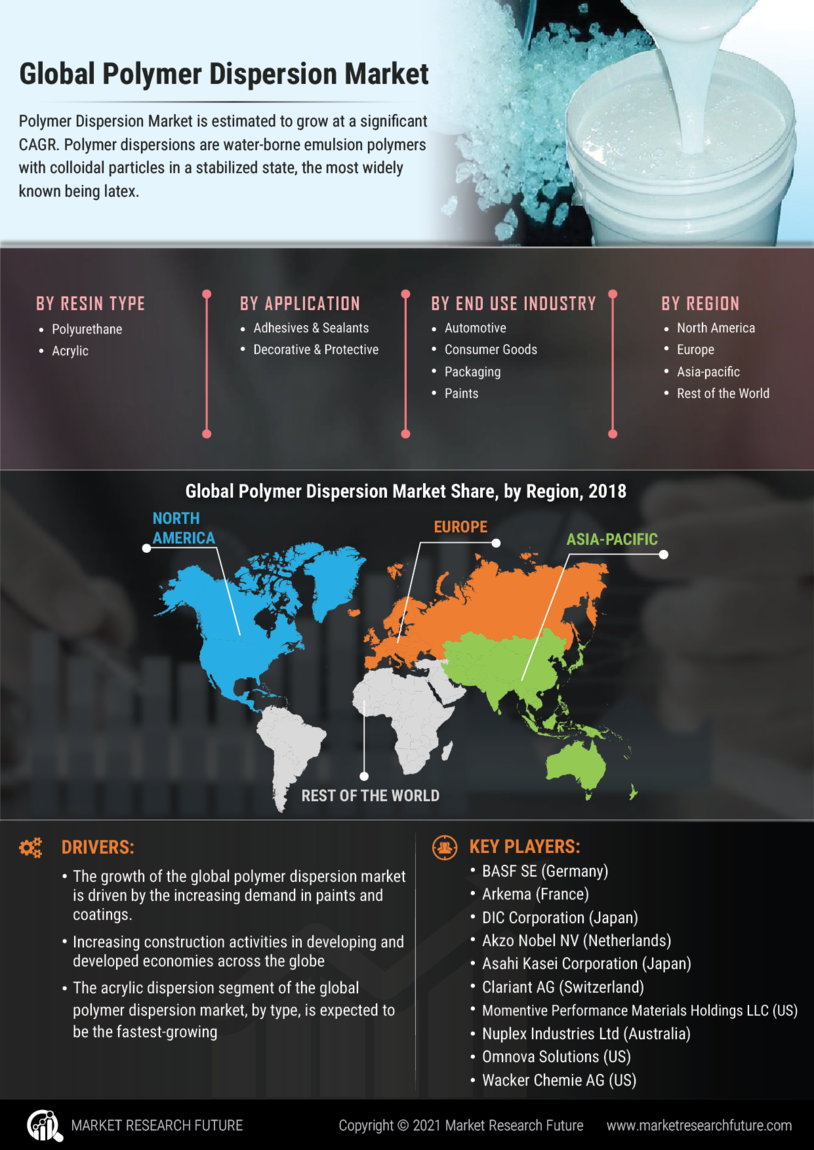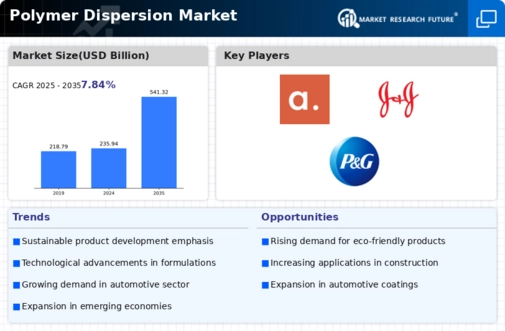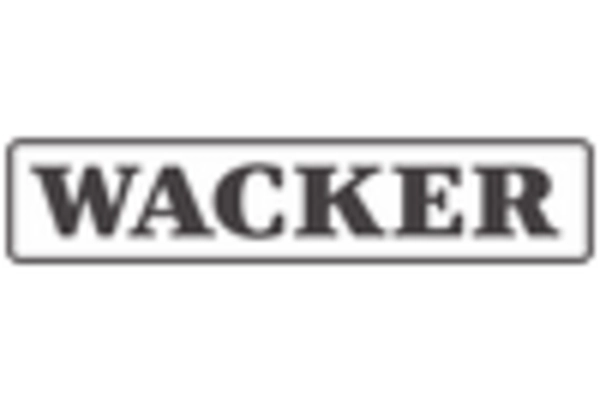Market Growth Projections and Trends
The Global Polymer Dispersion Market Industry is poised for substantial growth, with projections indicating a market value of 235.94 USD Billion in 2024 and an anticipated increase to 541.32 USD Billion by 2035. This growth trajectory reflects a compound annual growth rate (CAGR) of 7.84% from 2025 to 2035. Factors such as rising demand for eco-friendly products, technological advancements, and expanding applications across various industries are driving this upward trend. The market's expansion is indicative of a broader shift towards sustainable and innovative solutions in polymer dispersions, positioning it as a key player in the global materials landscape.
Rising Demand for Eco-Friendly Products
The Global Polymer Dispersion Market Industry is experiencing a notable shift towards eco-friendly products, driven by increasing consumer awareness regarding environmental sustainability. Manufacturers are increasingly adopting polymer dispersions that are water-based and free from harmful solvents. This trend is particularly evident in the coatings and adhesives sectors, where eco-friendly formulations are gaining traction. For instance, the demand for waterborne coatings is projected to grow significantly, reflecting a broader industry movement towards sustainable practices. As a result, the market is expected to expand, with projections indicating a value of 235.94 USD Billion in 2024, highlighting the importance of sustainability in driving market growth.
Regulatory Support for Sustainable Practices
Regulatory frameworks promoting sustainable practices are increasingly influencing the Global Polymer Dispersion Market Industry. Governments worldwide are implementing stringent regulations aimed at reducing volatile organic compounds (VOCs) and promoting the use of environmentally friendly materials. These regulations encourage manufacturers to innovate and develop polymer dispersions that comply with environmental standards. For instance, the European Union's REACH regulations are pushing for safer chemical usage, which in turn is fostering the growth of water-based polymer dispersions. This regulatory support is likely to enhance market opportunities, as companies align their products with sustainability goals, contributing to the overall market expansion.
Expanding Applications Across Diverse Industries
The versatility of polymer dispersions is driving their adoption across various industries, thereby propelling the Global Polymer Dispersion Market Industry. Applications in sectors such as automotive, construction, and textiles are expanding, as polymer dispersions offer unique properties like adhesion, flexibility, and durability. For instance, in the automotive industry, polymer dispersions are utilized in coatings and sealants, enhancing vehicle performance and aesthetics. Similarly, in construction, these materials are employed in adhesives and sealants, contributing to energy efficiency and sustainability. This broad applicability is expected to sustain a robust growth rate, with a projected CAGR of 7.84% from 2025 to 2035, underscoring the market's dynamic nature.
Technological Advancements in Polymer Processing
Technological innovations in polymer processing are significantly influencing the Global Polymer Dispersion Market Industry. Advanced techniques such as nano-dispersion and high-shear mixing are enhancing the performance characteristics of polymer dispersions. These advancements enable manufacturers to produce dispersions with improved stability, viscosity, and application properties. For example, the integration of smart manufacturing technologies is streamlining production processes, leading to cost reductions and enhanced product quality. As these technologies continue to evolve, they are likely to attract investments, further propelling the market forward. The anticipated growth trajectory suggests a market value of 541.32 USD Billion by 2035, indicating the potential of technology to reshape the industry landscape.

















Leave a Comment